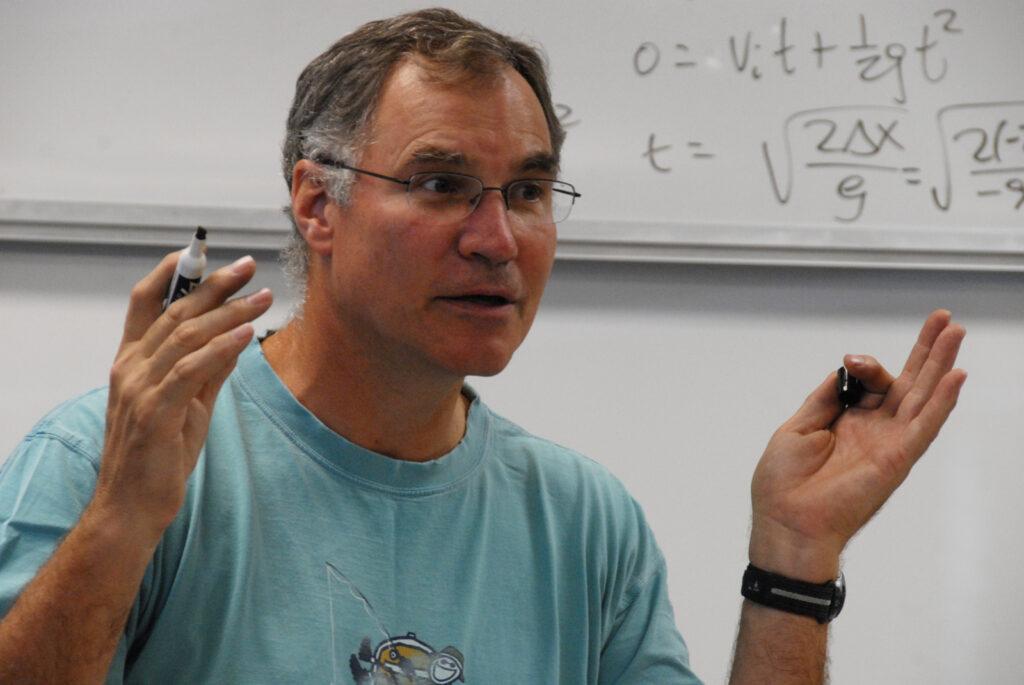It was just a normal day at school for physics teacher Kirk Davis when suddenly, the students in the classroom had to be evacuated.
Three years ago, Davis assigned his regular physics class to do an end-of-the-year project where students were allowed to create whatever they wanted. The students just had to run the idea by Davis before starting.
Two students decided to make a Rubens tube, a physics device used to demonstrate acoustic standing waves. The two students used a PVC tube and drilled holes through aluminum tape on top of the tube to model it after one of the devices in Davis’ room.
According to Davis, the model was supposed to be airtight, but some gas from the flame leaked out between the PVC tube and the aluminum, and since the PVC tube was burning, it caused the pipe to melt and burn, Davis said.
When the pipe burned, Davis evacuated the room and followed the proper procedure for securing the science classroom. Davis said he turned the exhaust fan on, cut the gas off and let the smoke clear before allowing the students to return to finish the class.
“There was no real danger, but it was pretty funny and a little exciting,” Davis said. “They also ended up burning their speaker that was attached to the end of the pipe.”
Besides creating a danger in the classroom, the two students had other problems.
“I asked them if they had a PowerPoint slide show to demonstrate the project, but they didn’t,” Davis said. “So their grade took a bit of a hit. I couldn’t get too mad since they weren’t trying to burn down the science building or anything.”
After this incident, Davis said, he’s become “a little more cautious” when assigning open-ended projects.
























